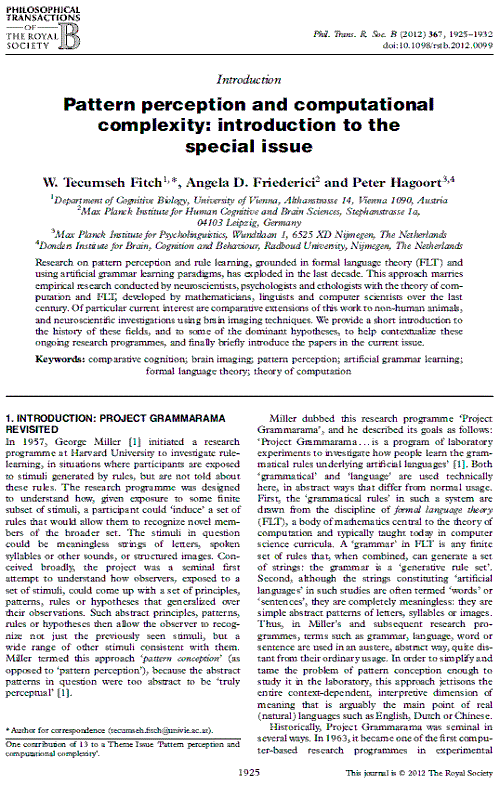( Continued from yesterday's post FLT )
Context Part I —
"In 1957, George Miller initiated a research programme at Harvard University to investigate rule-learning, in situations where participants are exposed to stimuli generated by rules, but are not told about those rules. The research program was designed to understand how, given exposure to some finite subset of stimuli, a participant could 'induce' a set of rules that would allow them to recognize novel members of the broader set. The stimuli in question could be meaningless strings of letters, spoken syllables or other sounds, or structured images. Conceived broadly, the project was a seminal first attempt to understand how observers, exposed to a set of stimuli, could come up with a set of principles, patterns, rules or hypotheses that generalized over their observations. Such abstract principles, patterns, rules or hypotheses then allow the observer to recognize not just the previously seen stimuli, but a wide range of other stimuli consistent with them. Miller termed this approach 'pattern conception ' (as opposed to 'pattern perception'), because the abstract patterns in question were too abstract to be 'truly perceptual.'….
…. the 'grammatical rules' in such a system are drawn from the discipline of formal language theory (FLT)…."
— W. Tecumseh Fitch, Angela D. Friederici, and Peter Hagoort, "Pattern Perception and Computational Complexity: Introduction to the Special Issue," Phil. Trans. R. Soc. B (2012) 367, 1925-1932
Context Part II —
Context Part III —
A four-color theorem describes the mathematics of
general structures, not just symbol-strings, formed from
four kinds of things— for instance, from the four elements
of the finite Galois field GF(4), or the four bases of DNA.
Context Part IV —
A quotation from William P. Thurston, a mathematician
who died on Aug. 21, 2012—
"It may sound almost circular to say that
what mathematicians are accomplishing
is to advance human understanding of mathematics.
I will not try to resolve this
by discussing what mathematics is,
because it would take us far afield.
Mathematicians generally feel that they know
what mathematics is, but find it difficult
to give a good direct definition.
It is interesting to try. For me,
'the theory of formal patterns'
has come the closest, but to discuss this
would be a whole essay in itself."
Related material from a literate source—
"So we moved, and they, in a formal pattern"
Formal Patterns—
Not formal language theory but rather
finite projective geometry provides a graphic grammar
of abstract design—
See also, elsewhere in this journal,
Crimson Easter Egg and Formal Pattern.




